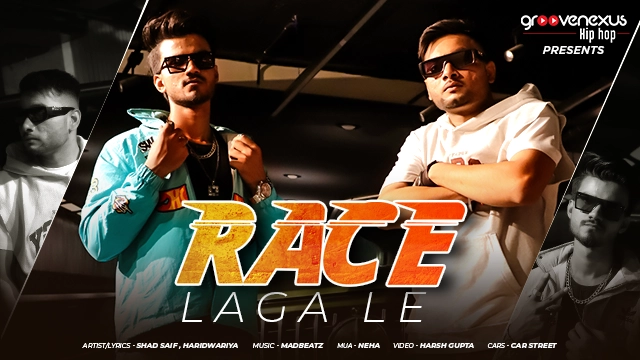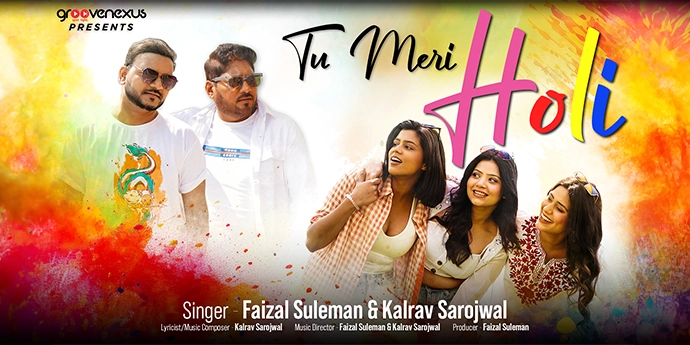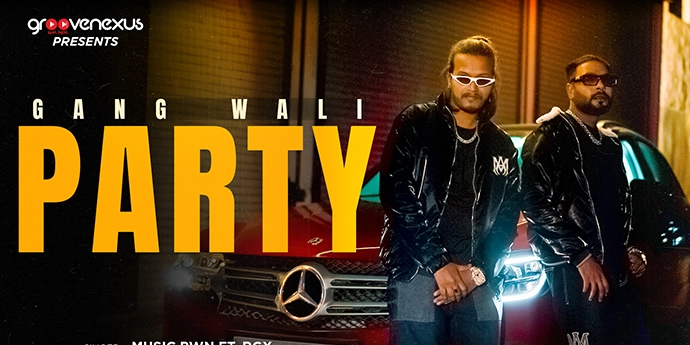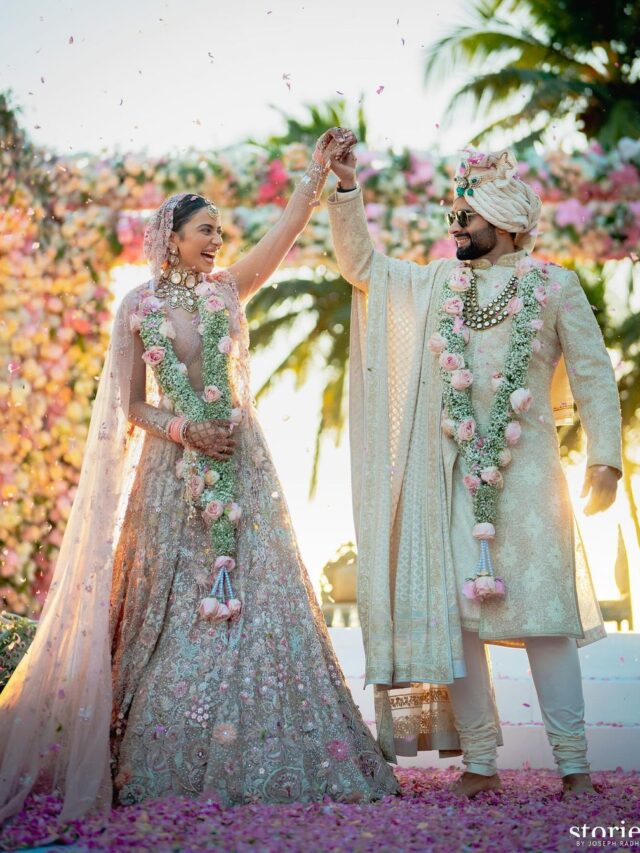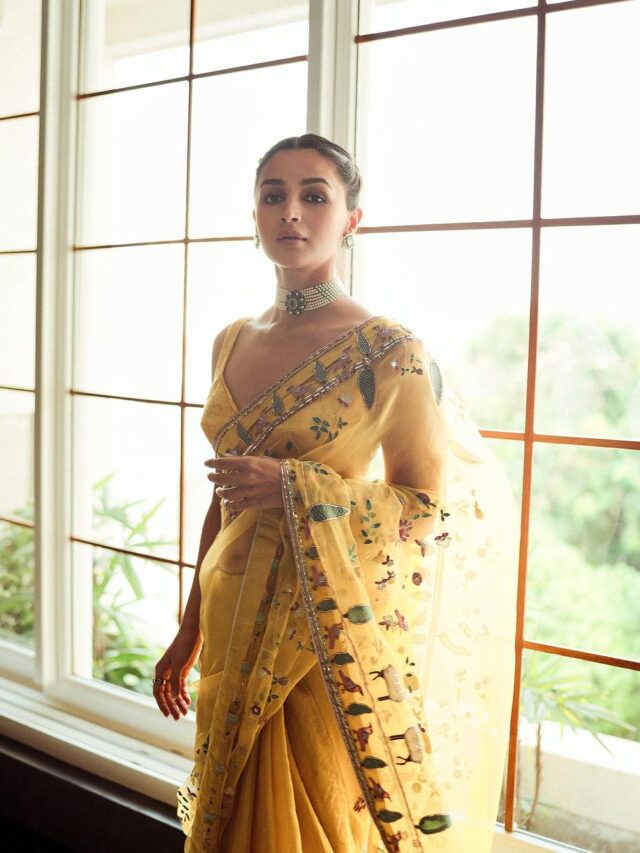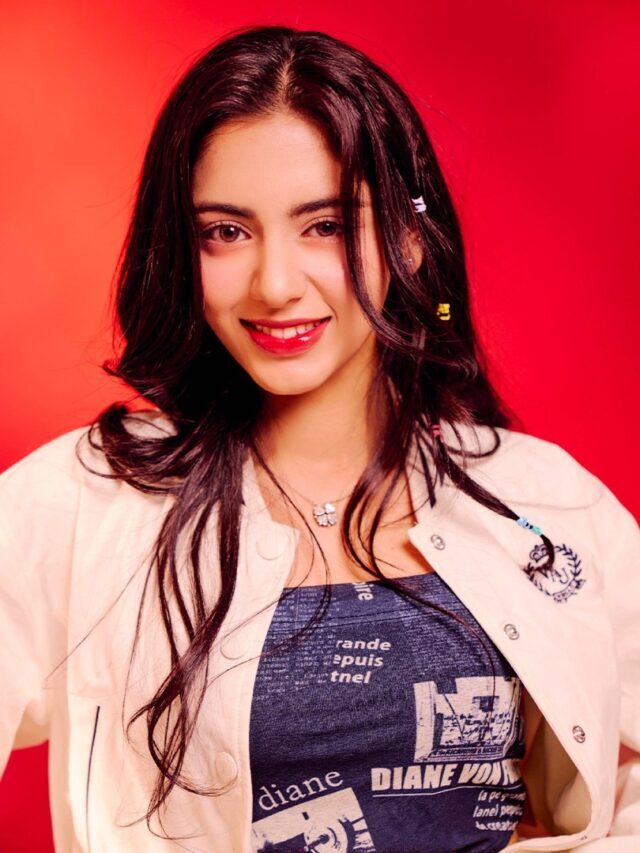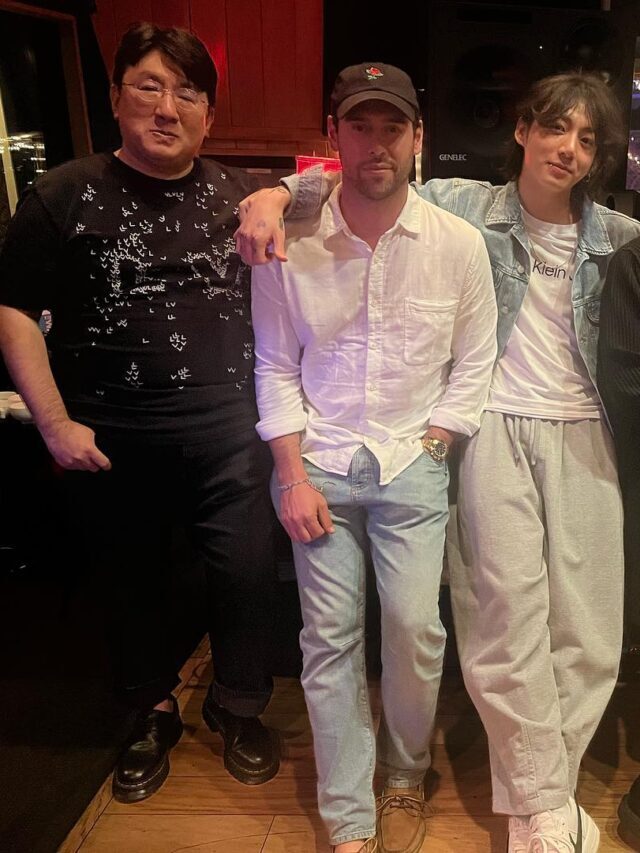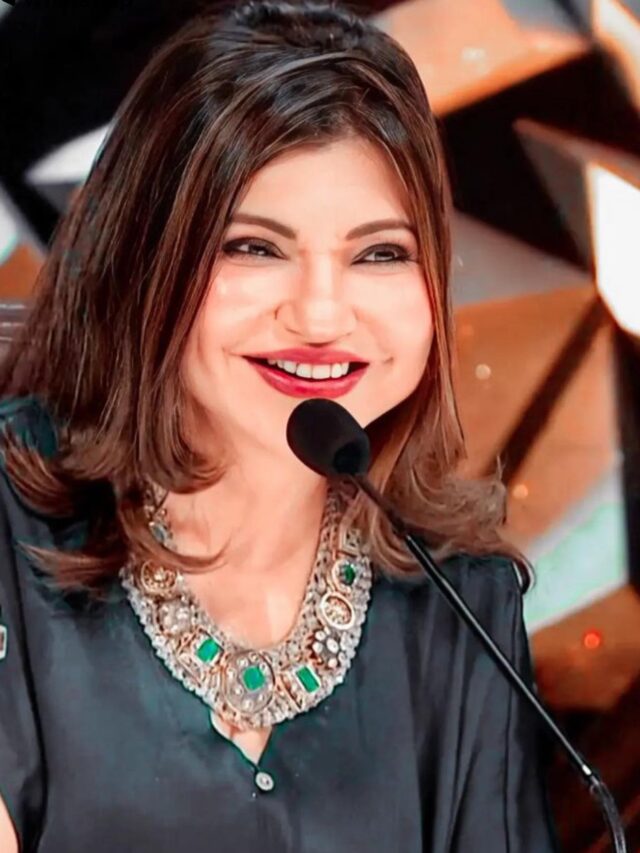What is EDM Music?
EDM stands for Electronic Dance Music, dance music, club music, or electronica. It is a broad range of electronic music genres typically having a repetitive beat and a synthesized backing track, made mainly for nightclubs, raves, and festivals. The two biggest identifiers for EDM are, its tempo, i.e., BPM (beats per minute), and its traits, i.e., drops, build-ups, bassline repetitions, certain sounds, etc.
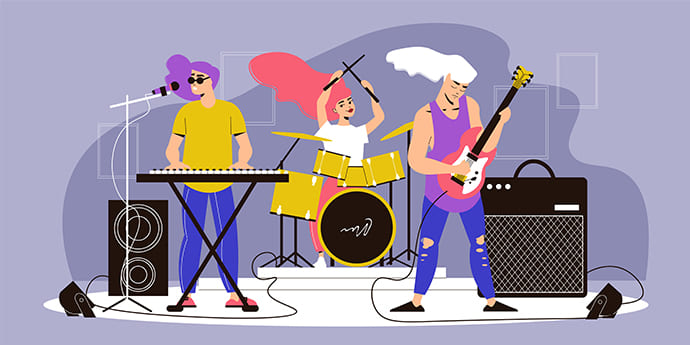
EDMs are mainly used for events, dance, parties, and shows, that’s what people use to think but with the evolution of music, we have a broader bandwidth in it like for saying downtempo is not for dance or parties, but it is still an EDM genre. Like every other musical genre, all EDM genres, along with several sub-genres, need separate studies and understanding before a person actually starts producing EDM.
Table of contents
History of EDM
Most people and even articles say that EDMs came to know in the 1980s, but actually, that’s not the fact. They were founded in 1950s and became famous in 1980s. Eimert and Stockhausen claim the contender for the first-ever EDM song in 1955. It was titled “Gesang der Jünglinge” which translates in English to “Song of the Youths”.
We dig a little deeper; first-ever music entirely produced by electronic generators (That we call an EDM), was at Germany in 1953. Electronic music was also made in Japan and the United States at the beginning of the 1950s and Germany. United States used the name “electronic dance music” (EDM) as early as 1985. Edgard Varèse saw electronic media’s utility for sound production, and his use of new electronic instruments led to him being identified as the “Father of Electronic Music “.
About Genres of EDM
They are created to label music to make it easier to refer to a specific kind of music, find the right events and artists. Because music evolves, splits further, widens, or narrows down, this aspect makes genre naming ineffective over time. Though these different genres of EDM are no rules or boundaries though, musicians are free to explore and evolve.
Popularity of EDM songs is also one of the main attractions of people in the events and live performances, apart from genres we also have the collection of best EDM songs of all time as a treasure for you to explore and enjoy.
People have tried to seize all the different types of EDM genres, its styles, and their origin under one roof. Some have succeeded in presenting just about the right insights, like The Genealogy and History of Popular Music Genres by Musicmap.
Major Genres of EDM
While there are numerous genres of EDM and even more EDM sub-genres, we’ve been able to list down a major few with explanations and examples. Factually It’s almost impossible to cover all genres of EDM by anyone as it is ever evolving field but here, we have made a list of EDM genres which you must know and are also considered to be the most popular EDM Genres.
1. House
House is one of the most common and recognized genres of EDM. It is warm & pleasant, has a steady floor of four beats, and contains lots of bass. Its roots go back to the disco music of the 70s.
Major Artists – Avicii, Swedish House Mafia, deadmau5, David Guetta
- Progressive House – This is presumably one of the most recognized and popular genres of EDM. The soundtracks are characterized to be ecstatic and fast-paced. Its general pace is around 128 BPM. Progressive House is best identifiable by its verses (that are heavily featured in most soundtracks within the genre), its build-up, then a drop and in some soundtracks a different second drop as well. Progressive House songs are well thought & change throughout, i.e. they progress.
Major Artists – Hardwell, Swedish House Mafia, David Guetta, Zedd, Avicii
- Tropical House – The most calming soundtracks are a part of Tropical House; therefore, this is the most tranquil of all the genres of EDM. As the name suggests, the music this genre offers is chilled, happy, and tropical relaxing music. The listener feels as if on a beach or other tropical areas listening to it.
Major Artists – Kygo, Matoma, Filous, Tez Cadey, Clean Bandit, Lost Frequencies, Years & Years
- Deep House – It’s usually slower and extra laid back than other genres of EDM. It features very deep bass. Deep House is among the least energetic of all the genres of EDM. One would generally here this sort of music in clubs or lounges. It has a general 4/4 beat and a different chord progression.
Major Artists – Maya Jane Coles, Hot Since 82, Lisa Shaw, Lost Frequencies
- Future House – Deep House + Progressive House + Bass House = Future House. This genre focuses more on basslines. Future house songs use a unique synth. They also have a lot of bass.
Major Artists – Don Diablo, Martin Garrix, Tiesto, Tchami
- Electro House – These songs are intense and melodic, also happens to be the most popular sub-genre of House. Electronic music genres contains a lot of synths & is heavily danceable. You can hear these types of electronic music in dance festivals like Tomorrowland. Electro House has a striking beat, an extraordinary build-up, and repetitious rhythms. Some Electro House melodies even have just pitch-changing notes (like Titanic by Steve Aoki)..
Major Artists – Calvin Harris, Nicky Romero, Steve Aoki, R3hab, Dimitri Vegas & Like Mike
There are other sub-genres, which are –
a) Melbourne Bounce/House – Began in Melbourne as the name suggests in 2010. It has intense vocal drops and a range of 135-150 BPM.
b) Dutch House – Originated in the Netherlands. These tracks are typically made up of complex percussion and drumbeats, dramatic buildups and short riffs of high-pitched synths.
Major Artists – Hardwell, David Guetta, Martin Garrix
c) Big Room – When you take away all the elements in House, except beats & put a heavily reverbed melody you have a Big Room track.
- Tech House: A hybrid combination between Deep house & Techno (we’ll discuss that ahead). The beat feels warm like the Deep House, but the structure of the songs feels techno.
- Bass House: Unlike other genres bass house’s comprehensive mixture is so broad that it’s almost impossible to define what exactly it is. You can’t say it’s simply ‘house with enormous basslines’. Though the general criteria which a bass house focuses are basslines, jerky beats & being.
- Disco House: It can also be related to funky house & also as a variation of French house, it is a genre that came to fruition in 2002 as a renewed interest of the people during the 1970s and early 1980s disco. It is a combination of old-school techno & house tracks.
2. Techno
The vibe of this genre is mechanical yet simple and soulful. Originated in Detroit, it was one of the originals of electronica of the century and was prime in popularity. Techno uses repetitious synth chords, melodies, and subtle drops. It uses a 4/4 beat with claps and snares between the quarter notes pulse with a range of 140bpm. It emphasizes less on build-ups and drops, and more on the beat, which is usually uniform throughout the song.
Major Artists – Armin Van Buuren, Carl Cox, Aphex Twin, Gesaffelstein
3. Trance/Progressive Trance
Trance is a Europe-based genre that’s opposite to Techno, and Progressive Trance is its sub-genre. It is uplifting melodic, emotional & highly danceable. It’s shaped by build-ups & drops, unfolding emotional melody. Trance used to be very popular back in the days but now, it is popular in the form of progressive trance. The main difference between the two is that trance is more repetitive and simpler, while progressive trance has a blend of progressive house and trance, making it more complex and upbeat. Trance ranges at around 140bpm. Trance is usually sans vocals or has minimal vocals.
Major Artists (Progressive Trance) – Tiesto, Armin Van Buuren, Dash Berlin
- Psytrance – Psytrance is a trippy version of trance, faster, arpeggiated & stimulant. Check out some of the top Indian Psychedelic Artists.
Major Artists (Psychedelic Trance) – Astrix, Infected Mushroom, Vini Vici, Astral Projection
- Goa – Goa Trance sound, in India, was being used synonymously with the term Psychedelic Trance. Read more about it here.
4. Moombahton
This genre is Reggae (a style of popular music originating in Jamaica) with more electronic elements. Moombahton (Moombah) has more of Dutch House and a two-step pulse beat fusing House with Reggae. Sounds like pop that is electronic. Vocalists can vary from pop to funk style. Rappers can also be featured.
- Moombahcore – This being a sub-genre, should not be confused with Moombahton. Moombahcore is more dynamic as it uses elements of Dubstep.
- Moombahsoul A fusion of deep house and soul, as well as genres such as Dutch house, electro house, house, and EDM, it also shares characteristics of reggaeton, salsa, reggae, and Latin house, although nowadays the style and elements of the tropical house have been incorporated. It usually has a tempo that ranges from 108 to 116 bpm.
Major Artists – Jack Ü, Diplo, Major Lazer
5. Trap
Trap is electronic rap (hence the name). One can hear elements of rap including the beat, melody, heavy drops and vocals. However, Trap has more Dutch House elements in it like a heavier and melodic synth. It is inspired by Hip-Hop & Techno and has irregularly arranged beats.
- Major Artists – Diplo, Skrillex (Jack U), Flosstradamus
6. Dubstep
Dubstep is popular because of its uplifting, speedy, energetic melodies with huge dynamic drops. It uses different synthesizers to create that metallic drop. Its range is around 140bpm. The original kind of dubstep has numerous variations now, found regularly in EDM concerts, raves, or clubs.
- Chillstep – As the name suggests, you would hear this kind of music when you want to relax, think deeply, or sleep to. Generally, Chillstep has an easygoing slow beat, ranging around 100bpm (or less). Instruments include piano, soft synths, strings, and at times guitar.
Major Artists Direct, Seven Lions, Gnash, ZHU
- Brostep – Heavy and unbalanced basslines that are heavier than Dubstep.
Major Artists – Skrillex, Zomboy, Excision
7. Future Bass
Future bass is aggressive but joyful at the same. This is a combination of genres like dubstep, trap, progressive house and Dutch house. Future bass songs use trap-like beats, pulsating synths, and many additional synth elements. It ranges around 130–140bpm.
Major Artists – Slushii, Skrux, Vanic, Prince Fox, San Holo
8. Drum and Bass
Also called DnB, it has a typical drumbeat, heavy basslines, breakbeats & melodies. Tempo is around 165-195 BPM. This genre became famous around the 1990s from the UK’s jungle scenes. Its signature mark was Jamaican dub and reggae sound, which is inspired by its jungle scene with heavy bass. Nowadays it’s quite different from what it used to be.
Major Artists – London Elektricity, Netsky
- Liquid DnB – Smooth and melodic water-like version of DnB. The main difference is that it is less bar-oriented and more instrumental, harmonious, and ambiance kind of music.
Major Artists – Kaleidoscópio
9. Drumstep
Drumstep is the lovechild i.e., fusion between Drum Bass and Dubstep. The difference is that Dubstep is usually around the range of 138 – 142 BPM’s compared to Drumstep which is at 160 – 180 BPM’s. Another difference is that Drumstep has heavier sub-basslines influenced by Drum Bass and halftime percussion, snares, kicks or beats.
Major Artists – Skrillex, Figure, Knife Party, Tristam
10. Ambient Music
A form of slow instrumental music, Brian Eno coined the term “ambient music”. It is a genre of EDM that highlights the atmosphere over traditional musical rhythm. It uses gentle and repetitive sound patterns created through synthesizers and timbral qualities, often lacking the presence of any net composition, beat, or structured melody. This is defined as sonic wallpaper, it generates a calming sensation. It uses layers of sound without musical tropes, for both passive and active listening.
Major Artists – Aphex Twin, Tangerine Dream, Brian Eno, Air
- Ambient Dub – It involves the genre-melding of dub styles. Patronized by King Tubby and other Jamaican artists, it has all the basic drop-outs, equalization, echo, and psychedelic effects. It often incorporates layering techniques.
- Ambient House – A musical category founded in the late 1980s, used to represent Acid House featuring ambient music elements and atmospheres. Tracks in the ambient house genre typically have four-on-the-floor beats, synth pads, and vocal samples integrated into an atmospheric style. The Dutch Brainvoyager is an example of this genre. Illbient (coined by DJ Olive) is another form of ambient house music.
- Ambient Techno – Ambient music atmospheres with the rhythmic and melodic elements of techno.
Notable artists include. Aphex Twin, B12, Autechre, The Black Dog
- Ambient Industrial – A hybrid genre of industrial and ambient music. Consists of evolving different harmonies of metallic drones and resonances, extremely low-frequency rumbles and machine noises, perhaps supplemented by gongs, percussive rhythms, bullroarers, distorted voices or anything that the artist samples. It is often processed to that point where the original sample is no more recognizable.
- Ambient Pop – An extension of Dream Pop, possessing a shape and form common to conventional pop, while its electronic textures and atmospheres mirror the meditative qualities of ambient. Lock-groove melodies of Krautrock influence this genre, but is less rough.
- Dark Ambient – Brian Eno’s original vision of ambient music found its opposite in this style. Dark Ambient features low or totally missing beats with passages of keyboards, eerie samples, and treated guitar effects.
- Space Music – Space music is used for both background score and foreground listening, to stimulate relaxation. Space music is commonly used in planetariums, for meditation, and as a relaxation aid.
11. Downtempo
The 1990s brought with itself a wave of slower-paced music, played throughout the relaxation chambers of the clubs or dedicated sections at electronic music events. Downtempo music started to surface around Ibiza when DJs would bring down the vibe with gentler electronica upon approaching dawn.
Major Artists – Kygo, Air, Zero7
- Chillout – This is self-explanatory. They are for kind of music that you would listen to while chilling from the daily hustle.
- Trip Hop – It’s synonymously used with Downtempo. It is a fusion of hip hop and electronica but a slower and ‘chilled-out type of music, may also be mixed with funk, dub, soul, psychedelia, R&B, and house.
This is the end of our list of all the genres of electronic music we have explained so far. As said earlier it is nowhere a boundation but only a few famous genres in EDM, there is always new growing genres in the industry, like in 2020 the Brazilian Bass was the most famous EDM genre that people loved listening to at their home during pandemic lockdown. Many Top edm artists released Brazilian bass music side by side there are many underrated EDM artist in India performing quite well caught attention in this lockdown. Hope you got something useful here, please share your views in the comments and share to all EDM Lovers!!



